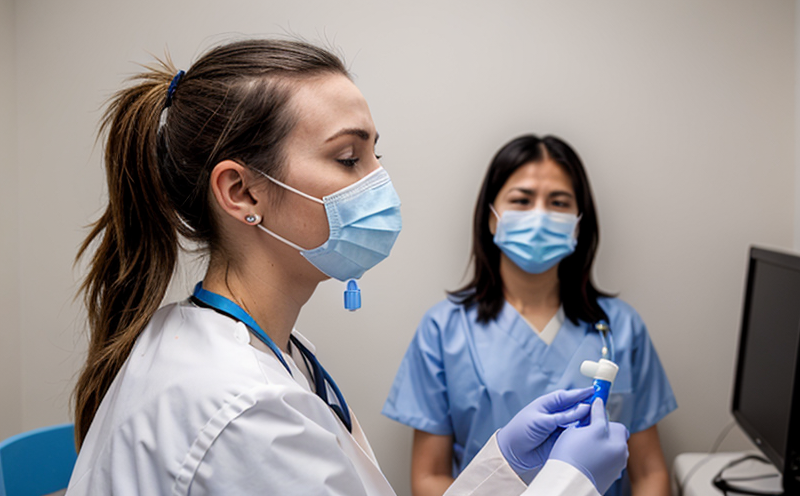Respiratory Toxin Exposure Testing in Livestock Facilities
The testing of respiratory toxins in livestock facilities is an essential component of ensuring animal health and welfare. Respiratory toxins can include a wide range of compounds such as endotoxins, mycotoxins, and bioaerosols that may originate from feedstuffs, bedding materials, or the environment itself. These toxins can cause significant harm to livestock by affecting their respiratory systems, leading to reduced performance, increased mortality rates, and higher veterinary costs.
Respiratory toxicity testing in livestock facilities is particularly important as modern agricultural practices often involve the use of a variety of substances that may not be fully understood for their health impacts. This service provides a detailed analysis of potential respiratory irritants present in the air or on surfaces within livestock housing, thereby helping farmers and quality managers identify risk factors early on.
Our testing procedure involves collecting samples from different areas of the facility using specialized sampling devices designed to capture airborne particles efficiently. These samples are then analyzed using advanced analytical techniques such as gas chromatography-mass spectrometry (GC-MS), liquid chromatography-tandem mass spectrometry (LC-MS/MS), and enzyme-linked immunosorbent assays (ELISAs). The results provide a comprehensive overview of the types and concentrations of respiratory toxins present, which can be used to implement targeted mitigation strategies.
One critical aspect of our testing service is its ability to differentiate between endotoxins from various sources including soil, plant material, and animal by-products. Understanding these distinctions allows for more precise control measures tailored specifically to the identified risks. Additionally, we offer services that assess bioaerosol levels which are particularly relevant in environments where high humidity or poor ventilation could exacerbate respiratory issues.
The importance of this testing cannot be overstated given the economic implications it has on livestock production. By identifying and addressing potential respiratory hazards early, farmers can prevent costly outbreaks while also improving overall animal health and well-being. Moreover, compliance with industry standards such as those set by ISO 16872-3 ensures that our clients meet regulatory requirements across national borders.
In summary, respiratory toxin exposure testing in livestock facilities provides valuable insights into the safety of housing environments for animals. Through rigorous analysis combined with practical recommendations for improvement, this service plays a crucial role in safeguarding both animal health and profitability within the agricultural sector.
Benefits
- Improved Animal Welfare: By identifying respiratory toxins early on, farmers can take proactive steps to enhance their livestock’s living conditions.
- Enhanced Productivity: Reduced incidence of respiratory diseases translates into better feed efficiency and higher meat or milk yields.
- Regulatory Compliance: Meeting stringent international standards helps ensure that operations comply with relevant regulations governing occupational health and safety practices.
- Economic Savings: Early detection leads to lower veterinary bills and fewer losses due to disease outbreaks.
Industry Applications
This service finds application across various segments of the agricultural industry where respiratory health is paramount. Dairy farms, pig production units, poultry operations, and extensive grazing areas all benefit from this form of testing because they share common challenges related to air quality and bioaerosol control.
For example, in dairy farming, understanding the levels of endotoxins present can help optimize bedding choices and feeding practices. Similarly, pig producers might focus on reducing mold contamination through better storage methods for feedstuffs. In poultry farms, eliminating exposure to mycotoxins becomes crucial due to their known detrimental effects on bird growth rates.
Extensive grazing operations also need to be aware of environmental factors like dust and pollen that contribute to respiratory discomfort among livestock. Implementing effective mitigation measures based on the findings from our tests ensures sustainable practices that promote long-term health benefits.
Environmental and Sustainability Contributions
- Promotion of Sustainable Agriculture: By maintaining healthier livestock populations, this service contributes positively to the sustainability goals of agricultural enterprises.
- Reduction in Waste: Early intervention prevents unnecessary medical treatments and reduces waste associated with sick animals.
- Increased Efficiency: Optimizing resource use through informed decision-making enhances overall operational efficiency within farms.
The reduction of respiratory diseases among livestock has broader implications for environmental sustainability. Healthier animals contribute less to greenhouse gas emissions per unit product produced, thus supporting eco-friendly practices in agriculture. Furthermore, by promoting robust agricultural systems that are resilient against pathogenic challenges, this service plays a vital role in fostering sustainable development principles within the sector.





